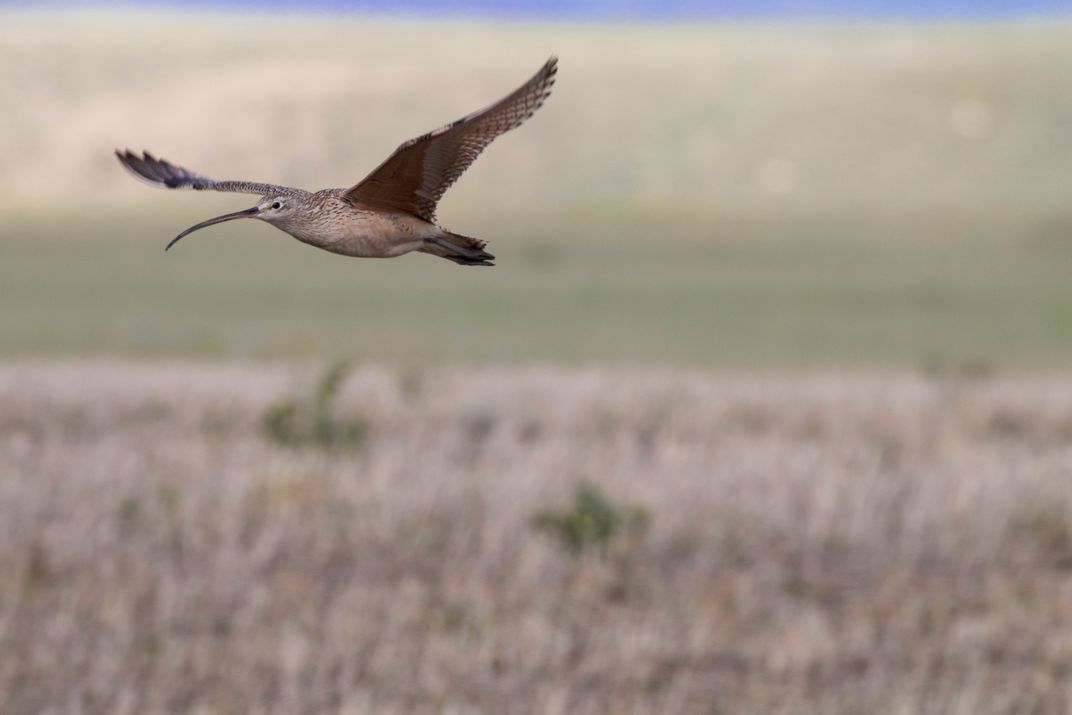Understanding Bisons’ Eating Habits Could Help Bird Conservation
A partnership between the Smithsonian Conservation Biology Institute (SCBI) and the American Prairie Reserve (APR) aims to understand how different grazing animals and grazing regimes, whether with cows or bison, impact the distribution and abundance of grassland birds in Montana.
/https://tf-cmsv2-smithsonianmag-media.s3.amazonaws.com/blogging/featured/bison_gold.jpg)

Centuries ago, millions of bison roamed the prairies of North America’s Great Plains and played a huge role both ecologically and in the lives of Native Americans. In 2018 the picture looks quite different. Large, migratory herds of bison have been replaced with domestic cattle, neatly confined to pastures bounded by barbed wire. How restoration of bison, and their natural migration patterns, to prairie landscapes will impact native biodiversity is a pressing question. Now, a partnership between the Smithsonian Conservation Biology Institute (SCBI) and the American Prairie Reserve (APR) aims to understand the ecosystem-level impacts of reintroducing these ecosystem engineers to Montana’s grasslands.
The scale of the American Prairie Reserve landscape makes it unique. The reserve currently manages 400,000 acres of purchased or leased prairie lands. It aims to reconnect three million acres total, allowing animals to move and select their habitat in a way they would not be able to in a smaller reserve. The end goal is to help restore the landscape ecosystem as a whole.
For scientists, the reserve and surrounding lands are a giant natural laboratory, enabling them to study populations of multiple species simultaneously.
One of the scientists behind this project is conservation ecologist Andy Boyce. He joined SCBI this summer, looking particularly at how the presence or absence of large grazers such as cattle and bison and the different grazing habits of each, impacts bird biodiversity. His work is part of the Smithsonian Conservation Commons’ Working Landscapes Initiative.
Among the first steps Boyce took was to conduct a large survey of grassland bird communities across the landscape, in areas with bison, cattle or no large grazers. His team detected 72 species in total.
“This area has an incredible diversity of birds that rely on grassland habitats, many of which are of conservation concern. We’re trying to understand how different grazing animals and grazing regimes, whether with cows or bison, impact their distribution and abundance,” said Boyce.
A future, more thorough, bird survey will include areas near streams and rivers. Boyce expects the inclusion of this important habitat to raise the number of bird species to over 100.
Another factor he is considering are prairie lands with no large grazers at all. As the entire landscape co-evolved with these animals, many species of conservation concern rely on really short grass that grazers leave behind.
“There are lands where the grazers have been pushed out… usually as a conservation measure. But does that really help birds that are of conservation concern?” said Bill McShea, SCBI ecologist and principal investigator for the APR project.
This winter, Boyce will also work to adapt the Freese Scale, a list of conditions the reserve developed and employs to assess progress towards ecosystem restoration, making it more indicative of biodiversity.
Going forward, understanding the effects of large grazers on vegetation and birds will help to achieve the right balance between conservation goals and economics, as these lands are considered among the most productive in the world for farming and ranching.
“Temperate grasslands around the world have the same issues with balancing production and biodiversity, so the results and answers we find here would be applicable worldwide,” said Boyce.
The Conservation Commons is an action network within the Smithsonian Institution (SI), highlighting the relevance of science and innovative interdisciplinary approaches across science and culture to on-the-ground conservation worldwide.


